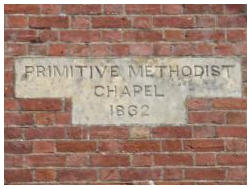


The population of the village grew slowly in the first part of the last
millennium, and then faster as better farming practices increased the
yield of the land allowing it to support more people. Just 26 people
were named in the tax returns for contributions for Ireland in 1642,
but by the time of the earliest government census of 1801, there
were 276 inhabitants in 60 families living in 55 houses. The
population peaked in the mid nineteenth century (356 in 1841), but
had dropped back to 290 by 1901. In the 1991 census there were just
under 400 residents; 404 in 2001. The poulation estimate in 2020
was 416.
The village community was largely self-supporting until the last
century and many people never needed to leave the village. There are
villagers alive today who remember the village bakery and the
blacksmith and just about everything a villager needed was close to
hand.
The number of houses of course reflects the population size. In the
mid 1500s there were 31 houses in the parish, including nine at
Burston. This had risen to around 70 in the nineteenth century and
it remained pretty much at this level until new building
commenced in the 1930s. Few of the older properties remain as
significant rebuilding took place in the 1800s.
Several blocks of 'Overstone' cottages were built (by Lord
Overstone) just after the middle of the 19th century. (One block is
pictured today on the right.) These generally comprised a block of
four cottages in one building, each including two main living
rooms, two bedrooms, and a substantial garden plot (for growing
vegetables).
Communal water, pigsty, dung pit and a boiler were provided for
each block. These well-constructed houses were built for around
£150 (about $225) and are much-valued village homes today,
although a couple of the blocks of four have been converted into
two larger houses.


Population
Housing
The last fifty years have seen great changes. Improved public
transport and widespread car ownership coupled with a general
decline in farming have seen Aston Abbotts transformed from a
farming community towards becoming a commuter village.
Although there are still farms in and around the area, modern
farming practices are largely mechanised and most of the
population seek employment elsewhere. These days many work in
local towns such as Aylesbury and Leighton Buzzard, but relatively
easy access to the capital has attracted a number of London
commuters.
There are quite a number of retired people living in Aston Abbotts
nowadays. Many of these bought houses here years ago and
commuted for work. Now they have reached retirement age.
Overstone Cottages in Aston Abbotts


- Photos
- Aston Abbotts - Winter Pictures
- Aston Abbotts How It Was
- Villagers Pictures - General
- Villagers Pictures - Ken Rhodie
- 630 Club Bean Competition 2011
- Astonbury X 2011 - Page 1
- Astonbury X 2011 - Page 2
- Astonbury X 2011 - Page 3
- Vic Scott Memorial Orchard
- Christmas Lunch 2011
- Peter Kent's Photographs
- Jubilee Picnic 2012
- Village Orchard - One Year On
- Village Orchard - Autum 2012 Planting
- Astonbury 2012
- Videos
- Interviews















